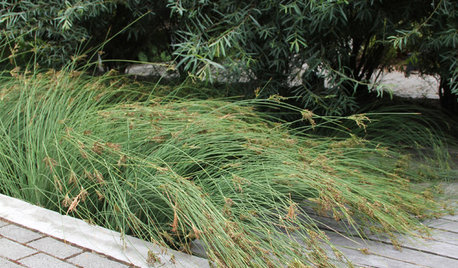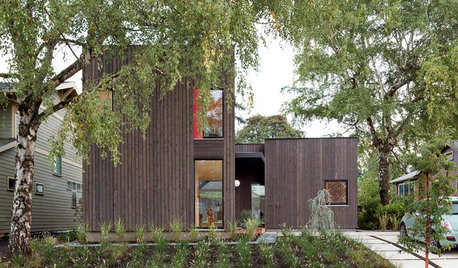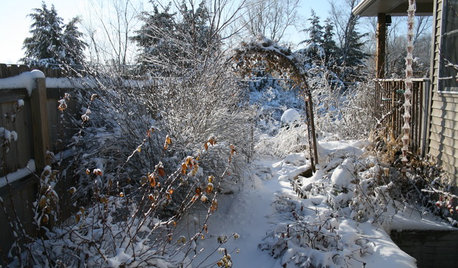Hi folks
I figured it's getting about that time of year when those of us in cold zones start thinking about if and how we should winter protect our roses. We all have our different methods or lack thereof - there are probably as many winter protection methods as there are GW rose posters - but I figured I've tried enough methods to give a try at presenting some basic principles to help us decide on what to do.
I prefer presenting these as "principles" rather than rules, since all of us at times have probably violated some of these principles and come out just fine. It's just that if you do decide to branch out and variations on these principles, you may need to be prepared to counteract some of the side effects. For instance, I know one frequent GW poster starts winter protecting when it's still warm, but he plans specific things to guard against premature critter residence and poor moisture control. Many of us like being a bit contrary, but I figure a list like this helps us make up our own minds about what we feel good about doing.
So here's my attempt at making rose winter protection decisions as straightforward as possible:
- If you live where the ground doesn't freeze solid in the winter, you don't need to winter protect (except maybe for some specific fussy-pants rose). So go enjoy your pina coladas while we're shoveling snow. Speaking of snow...
- If you live where there is consistent snow cover throughout the coldest parts of winter, you don't have to winter protect. Nature knows best, and snow is one of the best protectors you could find for your roses.
- If you plant only roses that are hardy for your zone, you don't have to winter protect. For zones 4-5 or even 3, there are a surprising number of options here.
- Even if you grow roses that aren't listed for your zone (like Hybrid teas listed to zone 7), some of them will survive just fine without your help. In that case, you don't need to winter protect.
- Some roses won't survive in your zone no matter what they're rated or what you do to baby them along - you just don't always know which ones those are. In those cases, you don't need to winter protect either, since won't make any difference with the true wimps.
Assuming you're still reading this, you're among the relatively few rose growers who like to push their zone limits and live in goofy climates where it gets bitterly cold, but doesn't stay consistently cold enough for the snow to hang around. Such as...well, Nebraska.
- Don't start any serious winter protection until the weather stays below freezing more or less consistently, long enough to freeze the ground. You want the rose to go mostly dormant, and it won't if you protect it too soon, but you will make a tempting home for critters. For me in zone 5 Nebraska, winter protection never starts before mid-December.
- The idea is to keep the rose cold and semi-dormant, to buffer the changeable temperatures a little and protect it from the worst of the drying winds, not to keep it warm. Too much warmth promotes premature growth and moisture problems.
- You only need to protect an inch or two above the graft (for grafted roses) or the roots of the rose (for own root roses). Most roses will shoot up to normal height once they start growing in the spring, and you'd never know which ones died to the ground and grew back from roots. Don't bother to protect the whole length of the cane, since that's too much work and can sometimes cause problems. However...
- Don't prune your rose down in the fall to deliberately shorten it (particularly to a mere nubbin like some books recommend), since your winter survival changes are greater the more healthy cane you have going into the winter. Feel free to prune out dead or diseased canes at any time though, and you can shorten a few canes a bit if they might whip in the wind and rock the roots.
- A healthy well-hydrated rose with a good root system is your best protection against winter damage, and you'll find that many roses will become better at winter survival as they get older. That's why planting very small band roses late in the year can result in poor survival of a rose that would otherwise be hardy for you.
- Natural materials are best. If nature doesn't provide the snow, use other natural materials that you'd normally want to put in your garden. This could be soil, weed-free straw, leaves that stay dry in the winter, burlap, evergreen branches, etc. This does NOT mean those manufactured Styrofoam cones, which are not only unnatural, they make you chop your rose down and tend to trap moisture.
- Trapped air is good, trapped moisture is bad (except for snow, see above), but you always need some circulation. So some people winter protect by putting up a burlap or twig or leaf bag barrier against the wind (trapped air) but leave it open on the top for circulation. You can close off the top if it's something that breathes well, like burlap, but you don't have to - you're mostly using air as a buffer to the worst of the cold and wind, like a down coat traps air to protect against cold for you. Some people collect leaves against the bottom of the rose, but make sure these are leaves like oak that don't mat down, or you'll get an oozy wet mess that can promote canker.
- Make sure you pull away the protection before it actually warms up consistently, which means before the tulips and daffodils are popping their noses out of the ground. Most dormant roses can handle cold down to around 20 degrees F just fine, and you want them to wake up naturally with the rest of the plants in spring. Trying to stop them leafing out in early spring just promotes moisture disease problems like canker, and doesn't really work anyway. The rose is going to wake up when the soil temperature warms enough and daylight lengthens, and you can't change that. In my zone 5 Nebraska yard, this is usually early March, well before the forsythia blooms.
- For climbers, if you really want something to cover an arch, pick something that is hardy in your zone or you'll be fighting to get any flowering growth every year. For a new climber, you can let the canes drop to the ground the first winter and cover them with some natural materials. If you have a climber that's meant to survive in your zone, you really don't want to do this once it gets big, and you won't need to.
- At most, you're probably only buying another zone or so worth of survival with all this protection, so don't worry about extreme measures. They're not worth the trouble, and can actually do more harm than good. I've killed more roses over the winter from canker damage with moisture than have died naturally from winter cold. In other words, for me in zone 5 all my protection only makes it an effective zone 6, except in the warmest areas of my yard.
I've learned many of these principles the hard way, and while I still winter protect most of the time, my methods have gotten much more streamlined and simple as I go. I'll hunt down my "Grinch" posting from a few years back to let you see the learning process I've been through in a fun way. I'll also see if I can find some pictures of how I usually winter protect, just as one example. I tend to use chopped up sections of leaf bags set next to (but not directly against) susceptible roses. Even so, lately I've been getting lazier and rolling the leaf bags up against the edge of the bed to make a wind break of sorts, and if I get smart enough, some day I won't protect anything but the teas (which are indeed fussy-pants roses in my zone).
I'm sure there are folks on GW who ignore any or all of these principles and do fine, but I figure this is some help for newbies who worry about their roses. Don't worry, they'll be fine. Roses can't read, and they don't know they aren't "supposed" to survive in cold zones. I'll let other folks more knowledgeable about pot survival over the winter discuss that themselves, since that is definitely not a skill of mine!
Cynthia



















seil zone 6b MI